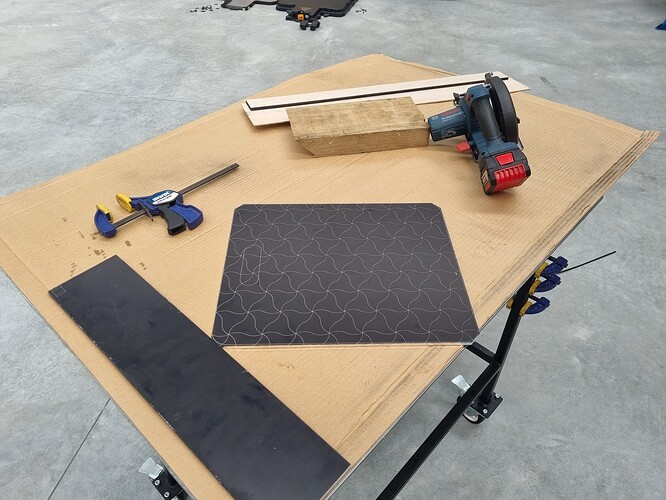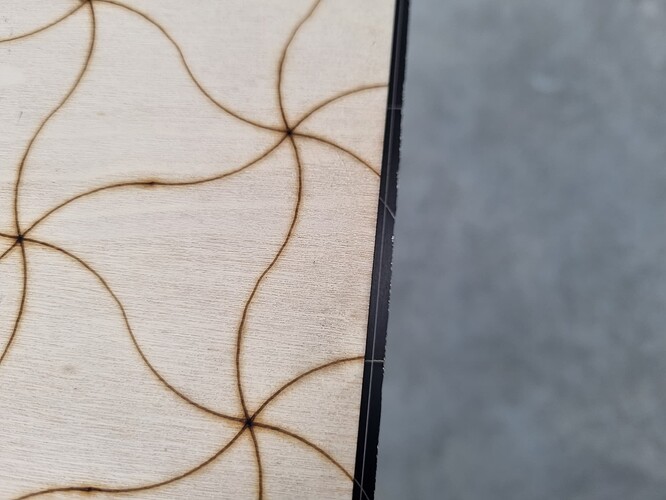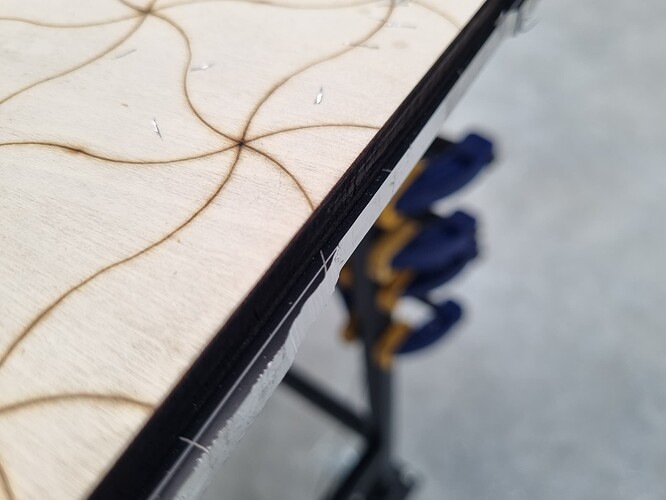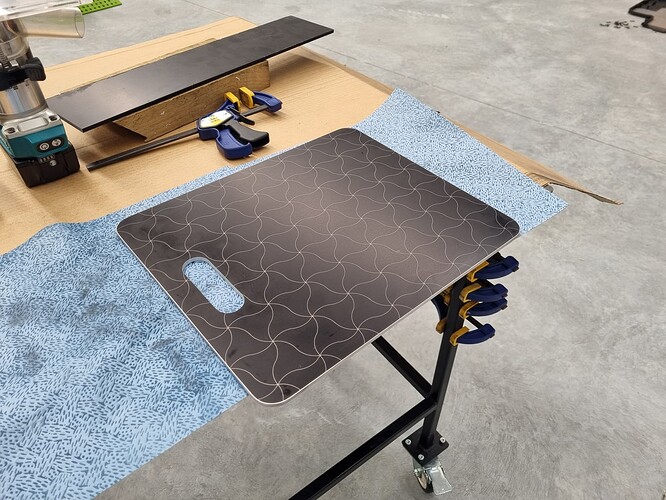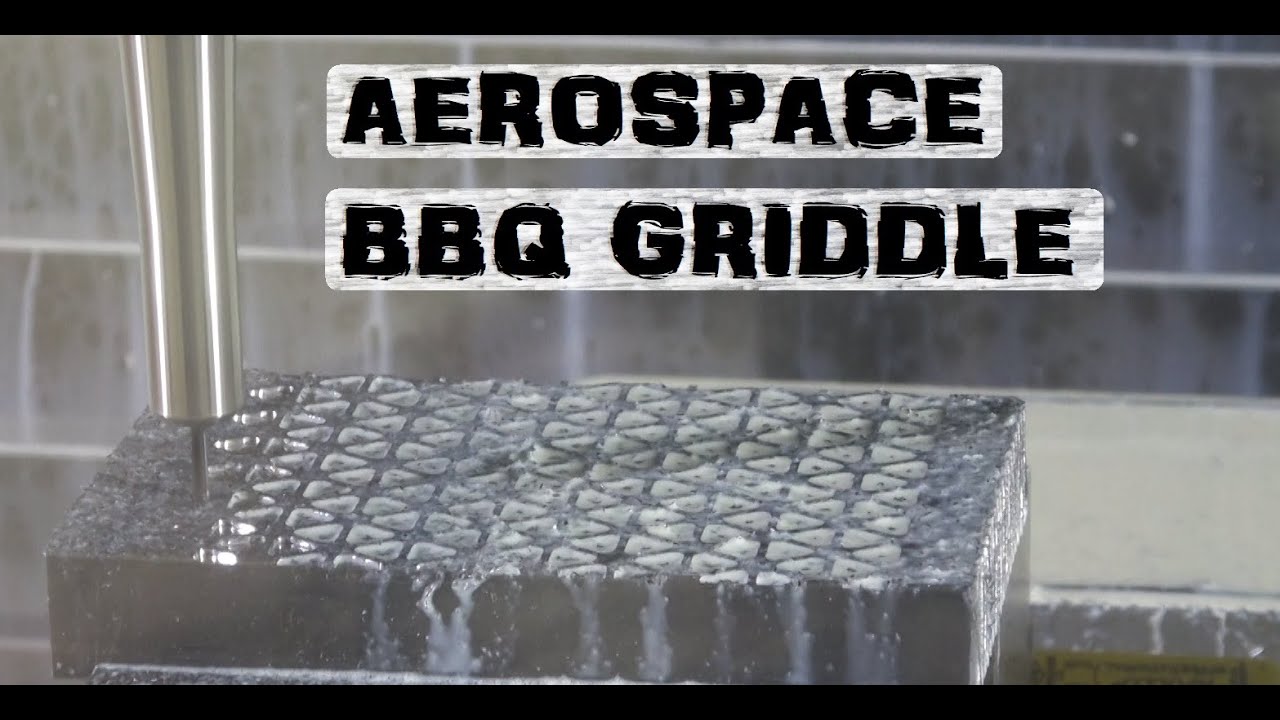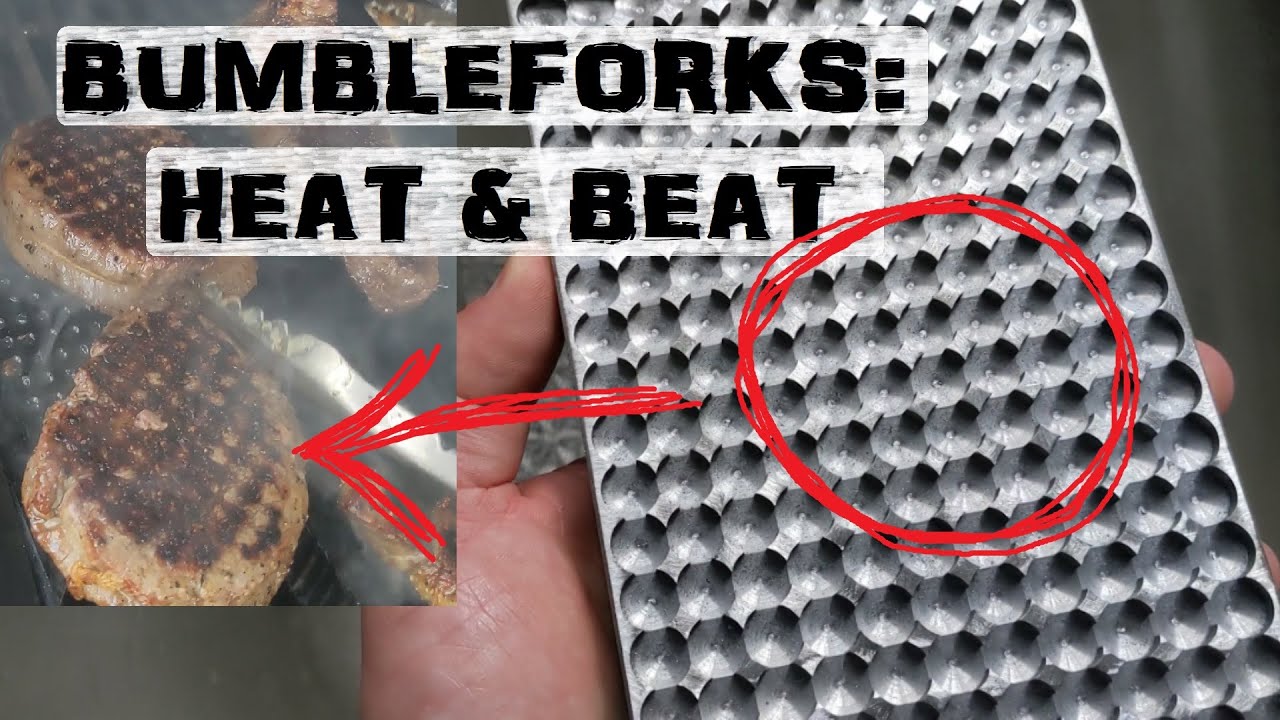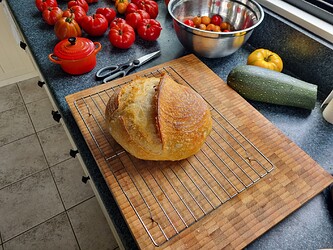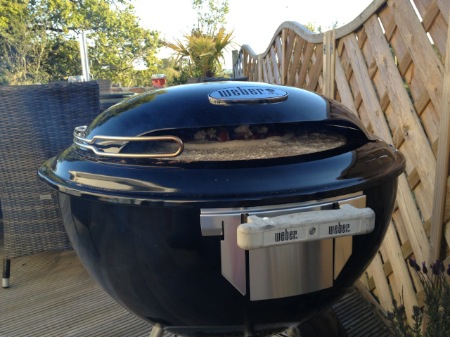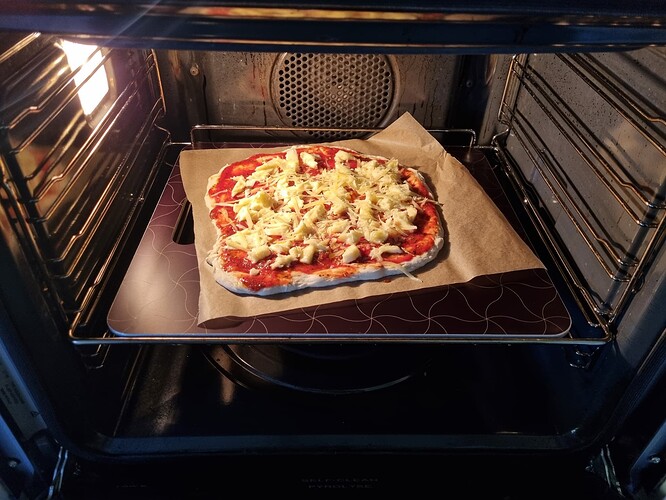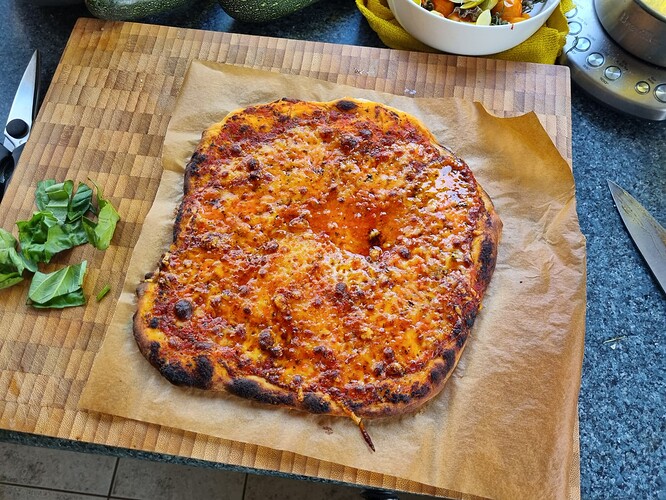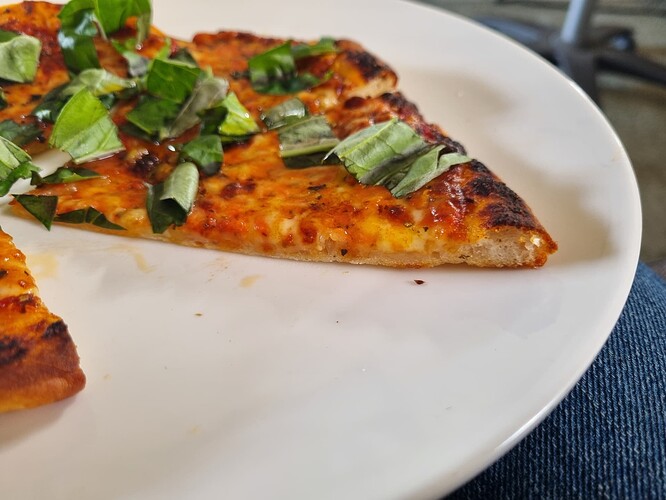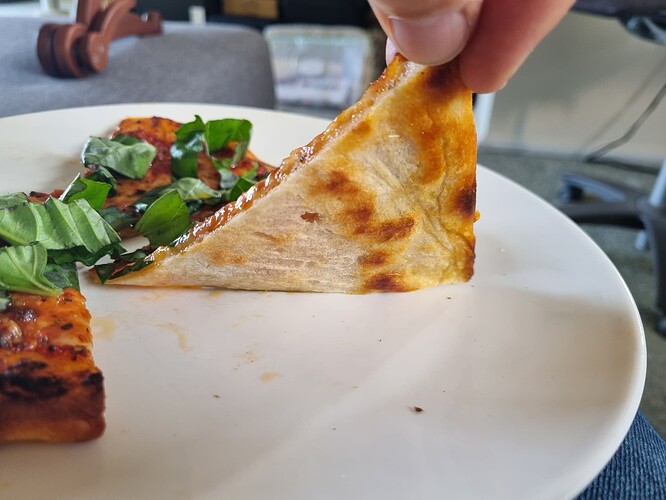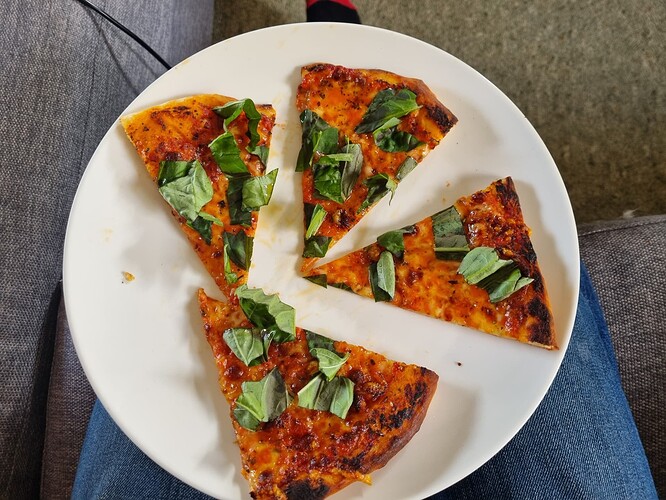Talking to @camchaney’s about using patterns with routing aluminium motivated me to get on with an idea I’d wanted to play with of making a pizza ‘stone’ from some spare 6mm aluminium we have around at work. It can be $100-200 for a 6mm steel one and looks like $50-60 just for the steel plate here so I thought I’d give this a rough try first and see how it goes. I’d have preferred bare aluminium rather than anodized as I very much doubt it’s food safe, but the plan is to give it a good pre-heat beforehand with everything well ventilated and see how it goes. If it smells horrendous then we give up. Then I’ll wrap it in tinfoil and give it a try that way.
Used the laser cutter to etch the shape onto the anodized aluminium as well as a design on the surface for a laugh. Used our Bosch metal cutting circular saw with my DIY wooden track for it to cut the rough outline. I left around ~5mm to be trimmed off.
I also laser cut the same design into an offcut of 9mm plywood, with the outline offset by 1/8" and stuck it down with double-sided tape. No good photos of this step, unfortunately.
Using a 1/2" pattern bushing and a 1/4" carbide spiral bit I routed around the outside. That’s showing the lead in and how clean the result is. I was doing the cut in a single pass, so 6mm DOC, ~5mm trim at maybe 10mm/s with what felt like probably ~5kg of lateral force (it definitely takes some doing). With the router in the lowest speed setting you can definitely hear it loading up but it doesn’t bog, didn’t get more than slightly warm and was throwing beautiful sliver chips the entire way.
I had a few issues with the pattern bushing rattling loose so ended up with some chatter marks about halfway around so in future I need to remember to tighten it better with the slip-jaw pliers.
Done, sanded to knock down the sharp edges and cleaned.
All of this is to show that there really are a ton of different ways to approach a topic. This is kinda ‘CNC-adjacent’ because it’s making a pattern with a CNC machine of some kind and then working to the pattern with hand/power tools. This could equally apply to making a pattern on an LR4 and hand routing it. It could be marking out and making the pattern by hand. It could be printing that pattern out, sticking it down and cutting it by hand. It could even be 3D printing that pattern, I guess.
All just many ways to accomplish the same thing. This was maybe 2 hours work, total. I timed how long it took to do the routing portion and it was maybe 20 minutes, with stops and set up time. Used not even half of a single 5Ah battery. I think it took me longer to get the edges broken with the palm sander and then to vacuum up.
